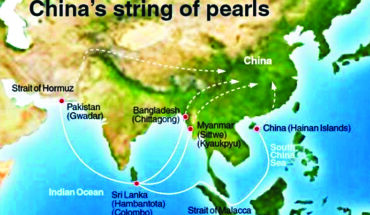Despite challenges, India is making significant strides in the global semiconductor industry, leveraging government support, a growing domestic market, and international partnerships

The future of India’s semiconductor industry looks promising, with significant opportunities for growth fueled by government initiatives, rising demand for electronic products, and shifting global supply chains. During his recent visit to Singapore, Prime Minister Narendra Modi reinforced India’s dedication to establishing a robust semiconductor ecosystem. Speaking at the Business Leaders’ Summit, Modi highlighted India’s plans to transform into a global hub for semiconductor manufacturing. He invited Singapore’s semiconductor companies to participate in the upcoming Semicon India exhibition in Delhi NCR, demonstrating India’s ambition to foster international collaboration in this sector.
The signing of a Memorandum of Understanding between India and Singapore during Modi’s visit was a milestone in bilateral cooperation for semiconductor ecosystem development. This MoU aims to boost supply chain resilience, facilitate business partnerships, and promote policy exchanges between the two countries. Modi also visited AEM Holdings Ltd., a semiconductor facility in Singapore, further strengthening the ties between the two nations in advanced technology and semiconductor manufacturing.
One of the key domestic players in India’s semiconductor journey is Tata Group. Tata’s semiconductor plant in Dholera, Gujarat, is central to India’s ambitions. Developed by Tata Electronics in collaboration with Taiwan’s Powerchip Semiconductor Manufacturing Corporation, the plant is expected to produce India’s first semiconductor chips by 2026. This facility will have the capacity to manufacture up to 50,000 wafers per month, focusing initially on 28-nanometer chips, with potential future upgrades to 22-nanometer technology. In addition to this, Tata is establishing an Outsourced Semiconductor Assembly and Test facility in Assam, further expanding India’s semiconductor ecosystem. These projects align with the government’s Atmanirbhar Bharat vision.
The government is pivotal in driving this industry forward through initiatives like the Production-Linked Incentive (PLI) scheme, which encourages domestic manufacturing of semiconductors and electronics. The Semicon India Program, announced with an investment exceeding $10 billion, aims to develop a comprehensive semiconductor and display manufacturing ecosystem. These incentives have attracted global semiconductor companies looking for alternatives to regions like China to explore opportunities in India.
The global semiconductor landscape is rapidly evolving, and India is positioning itself as a critical player in manufacturing and semiconductor design and research. The country already boasts a strong base of skilled engineers, with many global companies operating design and research centers in India. This gives India a competitive advantage in the fabless semiconductor market, focusing on design rather than manufacturing. As the demand for advanced electronics, 5G infrastructure, automotive electronics, and the Internet of Things (IoT) surges, India’s domestic semiconductor requirement is set to grow exponentially.
Collaboration with global semiconductor leaders is also vital to India’s strategy. For instance, Taiwan, a dominant player in semiconductor manufacturing, is a potential partner in India’s efforts to build a solid domestic semiconductor industry. Companies like Intel, TSMC, and Foxconn have expressed interest in entering the Indian market, further underscoring India’s growing prominence as a semiconductor hub. Despite the optimistic outlook, India faces several challenges in becoming a semiconductor manufacturing powerhouse. Semiconductor fabrication requires enormous investments in infrastructure, technology, and talent.
While India excels in semiconductor design, building world-class fabrication plants (fabs) necessitates advanced technological expertise and substantial financial resources. A fully developed semiconductor supply chain, including access to raw materials, water, and a reliable electricity supply, is also crucial. India is making significant strides in the global semiconductor industry, leveraging government support, a growing domestic market, and international partnerships. While challenges in establishing large-scale fabrication plants remain, India’s ongoing efforts suggest that the country will become a significant semiconductor manufacturing and design hub in the coming decade.
The writer is a Delhi-based senior journalist Views are Personal.
Email: narvijayindia@gmail.com





